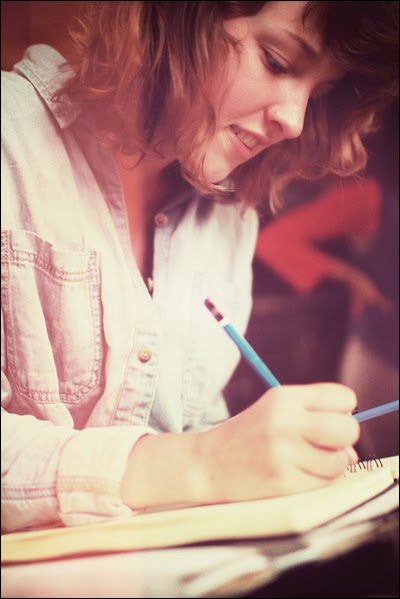
Working on my latest book “BROKEN: Navigating the ups and downs of the circus called work” yielded the opportunities to have illustrations and work with an illustrator. With the latter, it was hard seeking an illustrator—not because there is a shortage, but there are so many illustrators, with different styles, making distinct work. It was the drawing aesthetic of Lucy Engelman, that captivated me toward her visual compositions. Her pictures complement BROKEN’s prose and helps enhance its meaning. Here, she elaborates on her attitude toward illustrating—her passion for this world and her efforts in it.
On being an illustrator
What drew (verb surely intended) to your work
was the exquisite quality of your line work.
How do you achieve texture?
I have always loved detail, and I find in life that I get easily distracted by the details of everyday things. It’s exciting to me to discover something new about you’ve experienced many times. That element of time and discovery is something that I like to come across in my work. I achieve texture through many different patterns. I love discovering new patterns and seeing how I can fit them into different textures.

Your drawings of animals also impressed me,
assuming that nature is a part of your attitude
and practice as an artist. True?
Yes, absolutely. I love nature. It is definitely where I go to relax, explore, and just be. So it made a lot of sense to spend my time creating work about it. I love everything about animals. They impress me so much, and I love watching them problem-solve. To me, they seem like children, open to the possibilities of trying new things without fear. It inspires me.
How did you arrive at wanting to become an illustrator?
I actually always wanted to be an illustrator. I just took a bit of a round-about-way admitting it to myself. I entered art school at the University of Michigan, thinking I was going to be an illustrator, then spent all of my time doing everything but, and ended my education returning to that which made me feel confident. I challenged myself to take something that I felt was easy for me and figuring out ways in which it could be difficult. I’ve always been very independent and self-motivated, so I worked incredibly hard to get to where I am today professionally, and have enjoyed every minute of it.
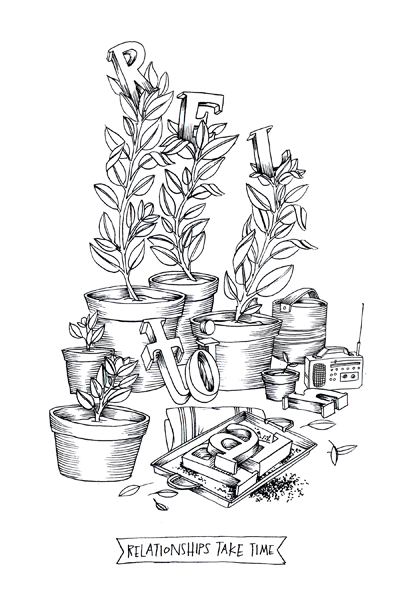
One of forty-two illustrations for book BROKEN
Can you give a tour of how an idea, for illustration, gets real?
For example, please pick one of your favorite illustrations you made for BROKEN.
I really enjoyed the letter-plant illustration “Relationships take time.” It was fun to imagine the words as letters, growing individually having to be cared for and harvested to make the words. Reminds me of something that would exist in “Alice in Wonderland” or “Dr. Seuss.” I always sketch things first, even if it’s just very rough, then go to ink, and sketch more if I need to. Finally, I scan the images into my computer and touch up the levels, then send them off.
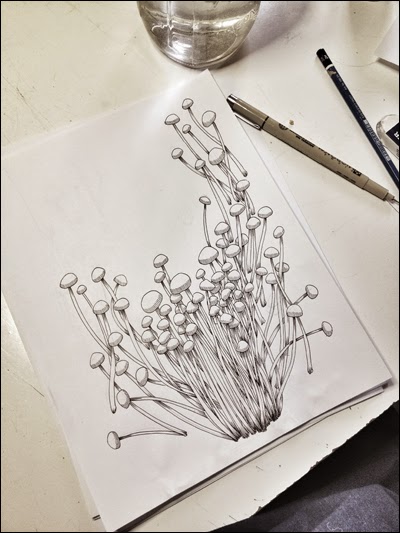
How do you practice drawing in order to feel competent
and confident at realizing this skill?
I find that it’s important to feel confident, even when you’re not, with art. A confident line has always been something I’ve subconsciously made a point to do. I don’t practice really, I tend to try things and see how they work, and not worry if they don’t.
What is your vision of growth, as it relates to your career?
What I love about what I do is I never really know what’s coming next. I absolutely love doing editorial work. The collaboration and speed is so exhilarating to me, and I love the feeling of seeing my work in print. I look forward to working with new people, and hope my work can reach a wider audience. I also love doing books, and hope to, someday, do several of my own. Someday in the future, I’d also like to art-direct. I’m great at imagining creative images, and I’d love to help someone create them.
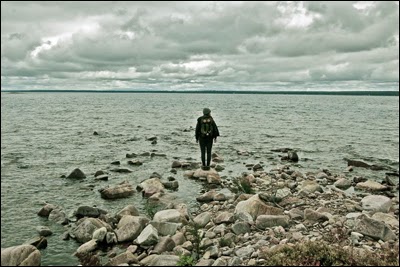
Rabbit Island, Michigan
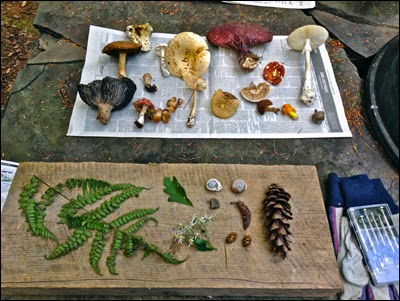
Beaver Brook, New York
I noticed your “Field notes” where you state, “I absolutely love creative work based on experiencing new places.”
Where do you go to experience new places? How does traveling influence your work?
I always feel very inspired when I go somewhere new, especially because there are no expectations. I love to travel for work, and I hope to do more of that soon. When I travel, the work pours out of me. I am a very visual learner, so I take it all in, and cannot wait to get it out on paper.
Who and/or what keep(s) you going as an illustrator?
Trying and completing new things I am excited about. I never feel stuck where I am, because being freelance is so ever-changing, that there is no time to be bored.
How do you get the word out about what you do?
How do you attract people to your work?
I’ve been very lucky, in that the bulk of my work is published in come capacity, so it advertises itself. I also have a blog and a website, and do interviews from time to time.
On creativity, illustrating, working
How do you handle disagreements while you’re working?
When a disagreement comes up, I find it’s most helpful to find out what part of the disagreement is negotiable and what cannot be changed. From there, compromise is always good, or sometimes simply walking away is the only solution. Compromise is so important to working with others, since most of the time, you will not have the exact same vision for a project.
Was there a part of your work that was particularly trying,
and how did you deal with it?
I have trouble sometimes when a client wants something and feels so strongly about it, and I know that it’s in bad taste. I remember that it is their project, and if they are so sold on their own idea, I let them have it. I remove myself mentally from the project, but still work to create the work to the best of my ability. It is so hard to be motivated with these types of projects, but I always remember all things do come to an end.
I also find that, on the other hand, when I am excited about a project and the client is pressuring me to hurry, I end up rushing and not creating as strong of a piece as I’m capable of or I start to hate it. It can be really difficult, but I always power through. My work ethic never wavers.
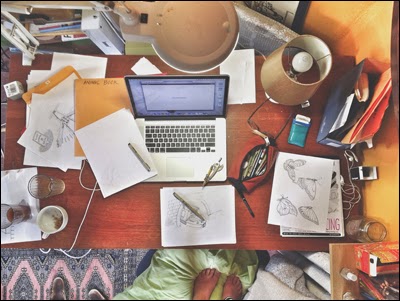
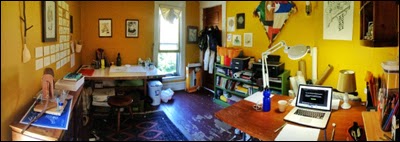
What is your workspace like? How does it contribute
to doing the quality of work you want to do?
I rent a room (above) on the floor above my apartment and work alone (sometimes my dog comes). Even though it’s so close to my living quarters, I have this mental separation where I know that when I close the door, I am at work. I have two tables, just so I can change things up, if need be. They’re pretty big, because even though my work is typically very detailed, I feel the need to have a lot of space around me, so I don’t bump into anything.
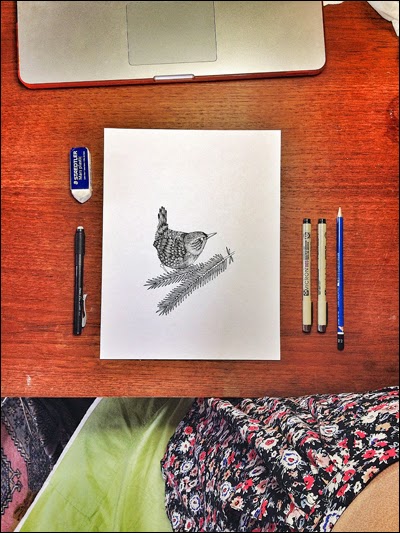
What tools do you use and recommend to work:
for collaborating, getting things done, and running your practice?
Spreadsheets are so great for finances. I have an accountant, but do all the legwork for her, so when taxes come around, they’re at the ready. I am a big fan of WeTransfer and use it whenever my files are too big to email. I also use Dropbox and Google Docs, from time to time, for branding projects.
What kind of art/illustration appeals to you?
Who and/or what are your creative influences?
I love hand-done work, no matter what the medium. The fact that an artist decided to do that, even in a time when technology is so prevalent and almost expected, when the integrity of maintaining their process of making work won out—I love that. I love looking at the work of my peers, obviously, and especially illustrators. I love magazines so much, so I spend a lot of time reading them.
How important is it for you to follow your instincts?
Integrity and trusting myself is my top priority in work and life. I always try to go with my gut and make a point to stand my ground, whenever I give my two cents. This is a part of my personality that I took time to strengthen when I started working, and it’s definitely bled into my everyday life.
If a person approached you and said, “I want to illustrate,”
what’s your response?
If they don’t already know how to draw, that should be the first step. Take the important building blocks at a university near you. They probably have a continuing education or pre-college program. Figure drawing, spacial relationships, perspective, design drawing—there are so many important things that you need to understand before you can start to express yourself properly. It helps you understand how things exist in space, even if you don’t necessarily want to represent them realistically.
If you already draw, decide how you want to apply yourself. Explore different avenues of illustration and see which is the best fit for you. Then jump in. No one is holding you back, but you.
How does the city of Grand Rapids, Michigan,
contribute to your work? And what makes it special
for startups/business/creativity-at-large?
Grand Rapids has an incredibly nurturing and supportive creative community. While it hasn’t always directly contributed to my work, it’s always been a great environment to be creative and professional. There are so many things that make it special for new young companies and individuals—I’ll give you a few, and for the rest, those who are interested will just have to come here and investigate. It’s incredibly affordable. Rent is very doable and their are several organizations that provide live/work spaces for small businesses and creatives who are starting out. There are so many events around town that encompass both local and international art. There are a few internationally recognized companies that want nothing more than to see startups survive and provide grants, loans, and advisors to help them do so. There are so many more benefits, I could go on forever. You’ll just have to come see for yourself!
• • •
All images courtesy of Lucy Engelman.
• • •
See more illustrations by Lucy Engelman for my book “BROKEN: Navigating the ups and downs of the circus called work” in this feature by The Bold Italic.
• • •
Read more about how BROKEN was made: its writing, editing, and design.
• • •
Read more from Design Feast Series of Interviews
with people who love making things.
Please consider supporting Design Feast
If you liked this lovingly-made interview, show your appreciation by helping to support my labor of love—Design Feast, which proudly includes this blog. Learn more.
